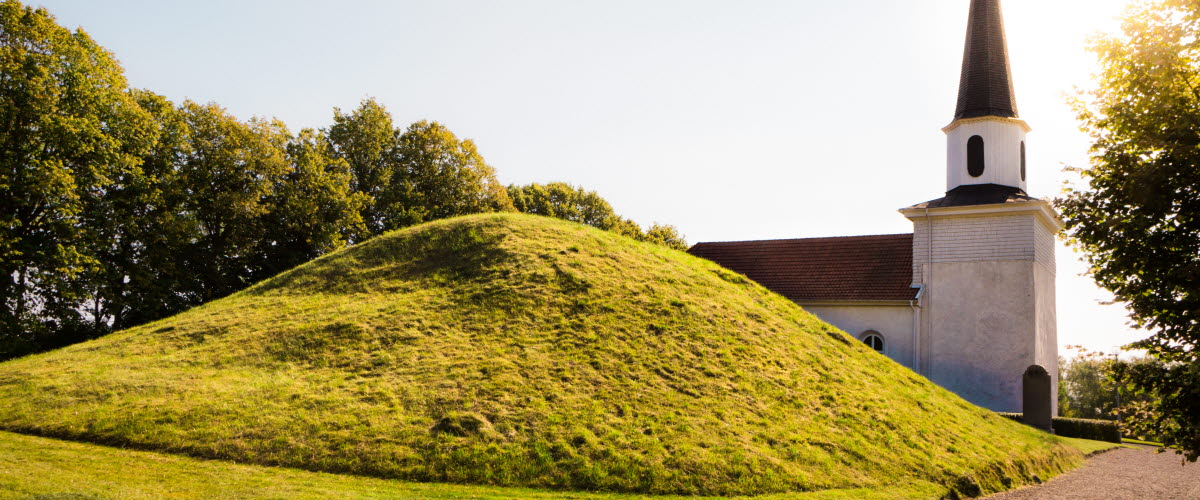About King Rane´s Mound
In the churchyard next to Flistad Church, you can see an apparently ordinary little hill. This ‘hill’ is called King Rane’s Mound, and is actually one of Skaraborg’s larger burial mounds. It also has tales to tell of times gone by.
King Rane’s Mound in Flistad, near Skövde, probably dates back to the Younger Iron Age (around 400 BC to 1050 AD). This pre-Christian tumulus is thought to take its name from Nordic mythology, as Rane was one of many names for the god Odin.
The mound is around 7,5 metres high, with a diameter of 26 metres, and is now enclosed within Flistad churchyard. Once upon a time, however, it lay outside the actual churchyard. When the old school building was demolished in 1935 and moved to a new location a few hundred metres away, the former schoolyard and King Rane’s Mound became part of the church’s land.
Investigating King Rane’s Mound
In 2018, ground radar investigations were carried out to provide an insight and to see whether it could be established what the actual mound contains. There appear to be stones around three or four metres down in the mound, in the shape of a burial chamber. It can also be seen where a teacher and his students made an opening in order to excavate the mound at the beginning of the previous century. There are signs that the mound had already been dug into before the school class’s unauthorised excavation. During the Viking period, it was common practice to plunder graves in search of valuables or treasure. It is not unlikely that this would have happened to King Rane’s Mound.
Excavations of similar graves
There are a number of similar mounds in Skaraborg, the largest of which is Skalunda Mound. Ground radar and bore hole investigations have been carried out here, showing that it dates from the late 7th century or the early 8th century, immediately before the Viking period and roughly contemporary with Uppsala’s mounds. Another mound in Skaraborg is the King’s Mound on Kållandsö. Here, a number of excavations were carried out after badgers started digging into the mound, revealing many unusual artefacts. These included everything from the bones of pets, predators and gyrfalcons, to game tokens, glass beads and an intentionally broken gold ring. Similar artefacts would probably be found if King Rane’s Mound were to be excavated, assuming that it has not already been plundered.



